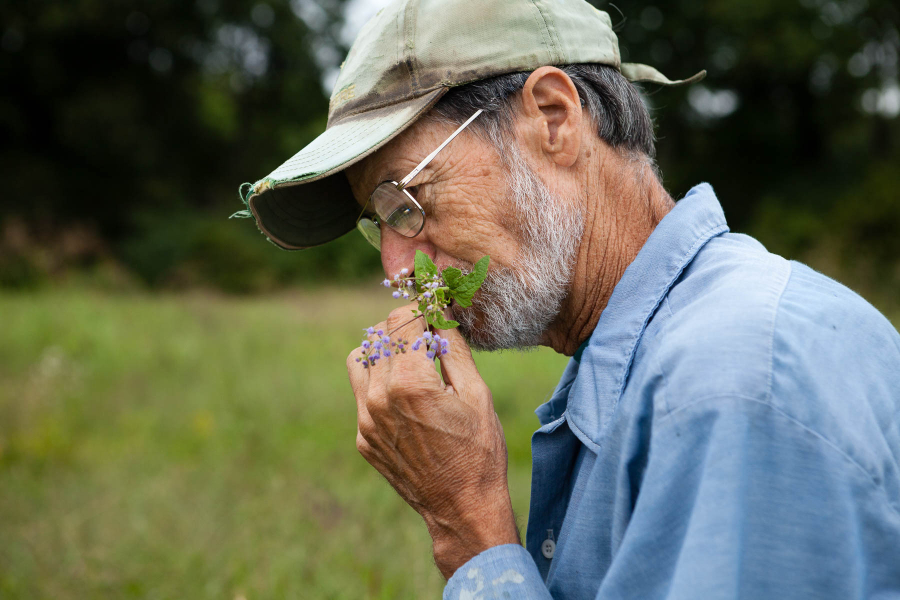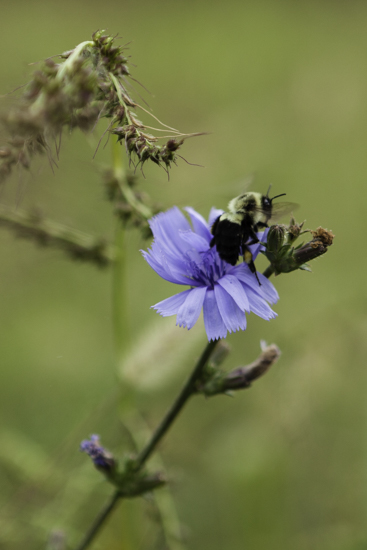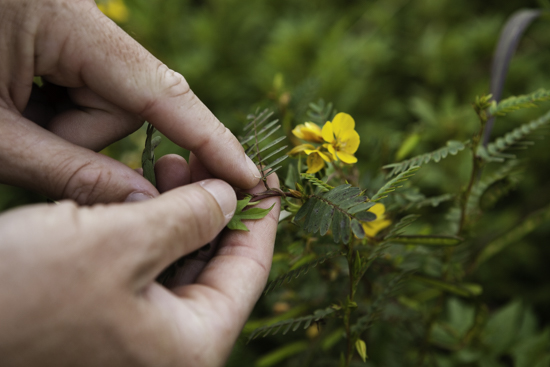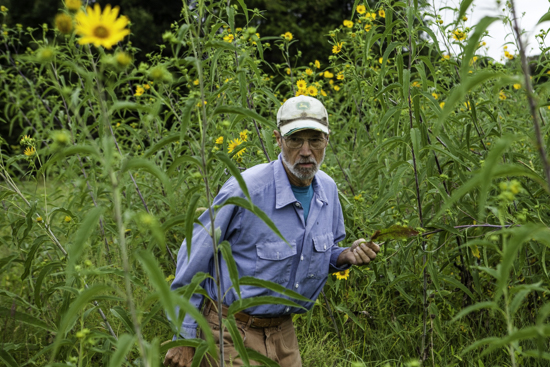Striking a balance between farming and wildlife habitat
Improving water quality and bringing back quail populations is a win-win with the Natural Lands Project

Looking at Bob Ingersoll’s farm, you’d never know that he had been growing hay for over 15 years. The fields that had produced hay—and corn before that—are now covered in native grasses and wildflowers. Last year, Ingersoll enrolled his almost 60-acre farm in Chestertown, Maryland, into the Washington College Center for Environment and Society’s (CES) Natural Lands Project.
This September morning, Ingersoll and Natural Lands Project Coordinator Dan Small walk around Ingersoll’s fields, observing the growth and pointing out the different species of wildflowers and grasses they planted only five months earlier.
Ingersoll got involved with the Natural Lands Project through the Chester River Association, one of the project’s sponsors. While he chose to enroll his entire farm, CES typically works with farmers and landowners to plant 100-foot grassland buffers on their land. That way, they can still get money from agricultural production and rented-out land for hunting—as well as a small income from the Natural Lands Project—but also sow the benefits of grassland buffers.
These buffers are known as a best management practice, or BMP, because they can absorb nutrients that run off of farm fields and prevent sediment from entering waterways. But alongside their water quality benefits, buffers can also provide ideal habitat for many species of animals.
Quail and habitat restoration
A large component of the Natural Lands Project is creating suitable grassland habitat for northern bobwhite quail. Quail used to be prevalent on the Eastern Shore of Maryland, and many people in the area grew up hunting quail, but their populations have declined drastically since the mid-1900s—due in part to habitat loss.
When it comes to installing grassland buffers, Small says, “we found that there’s no real tangible benefit to the landowners or farmers if we just talk about water quality on the land.” However, if they grew up hunting quail, they have an emotional connection to the bird.

Quail require three types of habitat to be successful: open areas, grassy cover and woody cover. “We’re specifically looking to create warm season grass habitat,” says Small. Cool season grasses, like those typically found on lawns, grow thick—meaning small grassland birds like quail that require open ground can’t move through them. “Think of your lawn,” he says. “If that grew up, there’s no way a quail could walk through that.” Warm season grasses, on the other hand, grow in clumps, leaving plenty of space for quail.

One of the factors associated with the decline in quail populations is the lack of woody cover. The disappearance of hedgerows—a row of shrubs or low growing trees that typically form boundaries between farm fields—has had a huge impact on quail, according to Small. As farms got larger, those hedgerows were taken out, and quail lost an important place to go during the winter when the rest of the landscape is covered in snow.
For that reason, dispersed throughout the grasses and wildflowers, are colored markers labeling where they planted hedgerows. “Not only are we adding nesting habitat in all the grass, but we need to add winter habitat as well.”
Creating habitat suited for quail doesn’t just benefit them, but many other species as well. “We have a lot more small birds here than we did any year that I can ever remember, because there’s something there for them to eat,” says Ingersoll. “And butterflies! I’ve never ever seen so many butterflies.” He points out bees and finds a fuzzy caterpillar on one of the wildflowers. Small points out the call of a bobolink, a bird that requires grasslands on its migration. Even deer take advantage of the tall grass cover, as evidenced by the imprint from where a deer had been lying not too long before.
A long-term commitment
It takes about three years for the grasses to get established, but once that happens, they still need to be managed. “You can’t just put it in and walk away,” says Small. After they’re established, they will be managed in part through controlled burns. As the grasses grow, they begin to lay down on top of each other, making it difficult for the quail to move on the ground. “Controlled fire is a really good method to wipe the slate clean,” says Small. “You don’t really hurt the native [plants] because they can respond to that and pop back up.”
Landowners who enroll in the Natural Lands Project sign a 10-year contact with CES. This long-term commitment is a promise both to CES that there is sufficient time committed to establish habitat on the land, but also to the landowner that CES won’t plant the new habitat and then leave. They work with landowners over that time to make sure that the land is in good condition.
“The landowner, somebody like myself, is relying on the best information I can get from Dan to make this as successful as I possibly can,” says Ingersoll. “If we didn’t have the backup, it’d be like learning it all over again. And I probably wouldn’t have done it.”


Comments
There are no comments.
Thank you!
Your comment has been received. Before it can be published, the comment will be reviewed by our team to ensure it adheres with our rules of engagement.
Back to recent stories